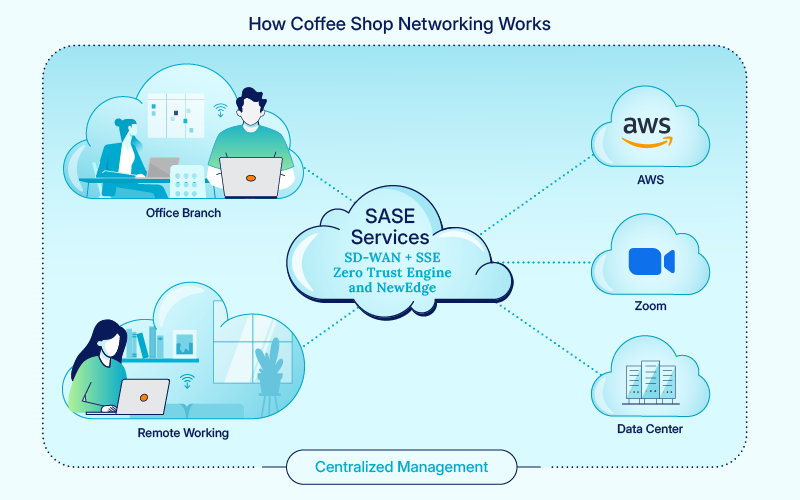Coffee shop networking is a modern approach to enterprise network design that supports hybrid work environments.
Gartner defines coffee shop networking as a wireless-first, cloud-managed, and identity-driven architecture that eliminates backhaul dependencies, simplifies operations, and enhances user experience. It draws inspiration from the simplicity of connecting to Wi-Fi in a coffee shop, which is quick, wireless, and location-independent. Coffee shop networking replaces legacy systems with cloud-native tools like SD-WAN, zero trust network access (ZTNA), and security service edge (SSE). With this model, users can securely access cloud applications and services from anywhere, without relying on traditional, centralized infrastructure.
Organizations with a hybrid workforce can benefit the most from this model, as it enables secure, scalable, and agile networking without the complexity of traditional branch setups.




 Back
Back

















